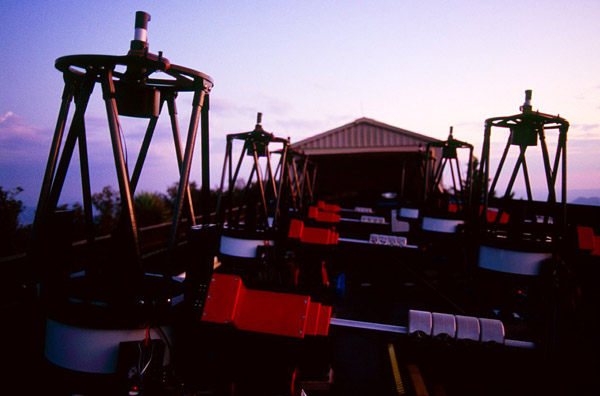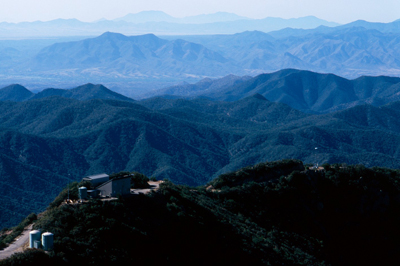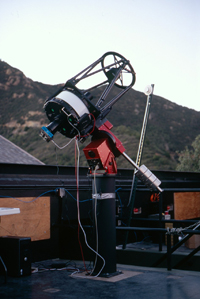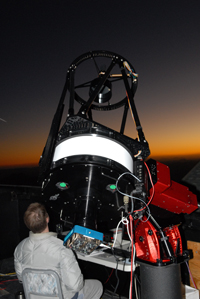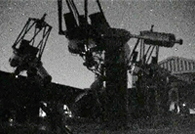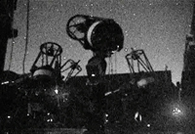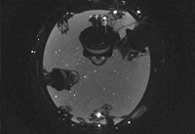Special Projects
Harvard-Smithsonian has discovered a super-Earth transiting a nearby low-mass star using eight RCOS 16 inch Carbon Truss Ritchey-Chrétien Telescopes mounted on Software Bisque Paramount MEs!
We are pleased to announce the discovery of GJ 1214b, the first nearby transiting super-Earth exoplanet! GJ 1214b is a 2.7 Earth radius, 6.6 Earth mass exoplanet that transits its very small, very cool parent star once every 1.6 days. With a predicted temperature of 200 degrees Celsius, GJ1214b is warmer than Earth, but considerably cooler than most other known transiting exoplanets. This newly discovered planetary system is located a mere 40 light-years away. A paper describing the planet appears in the 17 December 2009 issue of Nature. From the Harvard-Smithonsian CfA, a press release and press images are also available. The MEarth Project is a survey to photometrically monitor 2000 nearby, small stars (called M dwarfs), looking for periodic dips in light, due to the presence of habitable super-Earth exoplanets transiting in front of the star. In particular, MEarth is looking for a planet located at the right distance from its star to have a temperature right for liquid water, in what is often called the "habitable zone." Because M dwarfs emit much less light energy than our star, a habitable zone planet around an M dwarf would be much closer to its host star than the Earth is to the Sun. This means that compared to the Earth-Sun system, such a planet around an M dwarf is more likely to be in an orbit aligned with our line of sight and more likely to transit. Moreover, a habitable zone planet around an M dwarf would have a mere two week orbit, compared to the Earth's one year orbit. And by looking at small stars, we can detect smaller planets - as small as twice the radius of the Earth. Such a "super-Earth" could have a liquid or solid surface; if it is in its star's habitable zone, it might even be able to support life! The case for M dwarfs as exoplanet hosts is outlined in a recent paper by Nutzman & Charbonneau.
The MEarth Observatory consists of eight, robotically controlled, 40 cm telescopes located in a roll-top enclosure (lower-left quadrant of photo) at the F. L. Whipple Observatory on Mt. Hopkins, AZ. The MEarth team comprises:
Each of the eight identical MEarth telescopes is a 16" f/9 Ritchey-Chretien on a German Equatorial mount. Each detector is a thinned 2048 x 2048 CCD's with a plate scale of 0.76 arc seconds/pixel with a custom filter that lets in light at wavelengths longer than 715 nm. At right are images of a single MEarth telescope, along with graduate student Philip Nutzman.
We record nightly time-lapse movies of the telescopes in action. Please click the images above to see some typical nights at the MEarth Observatory (requires Quicktime). We have two normal webcams (left and center), each looking at four of the eight telescopes, and one fisheye camera (right) that captures all eight (look closely!) of the MEarth telescopes at once. _________________________________________________________________________________________________ Due to the success of this project, RCOS has received an order from Harvard for eight more 16 inch carbon truss Ritchey-Chrétien telescopes for the next MEarth site opening in 2011. |

